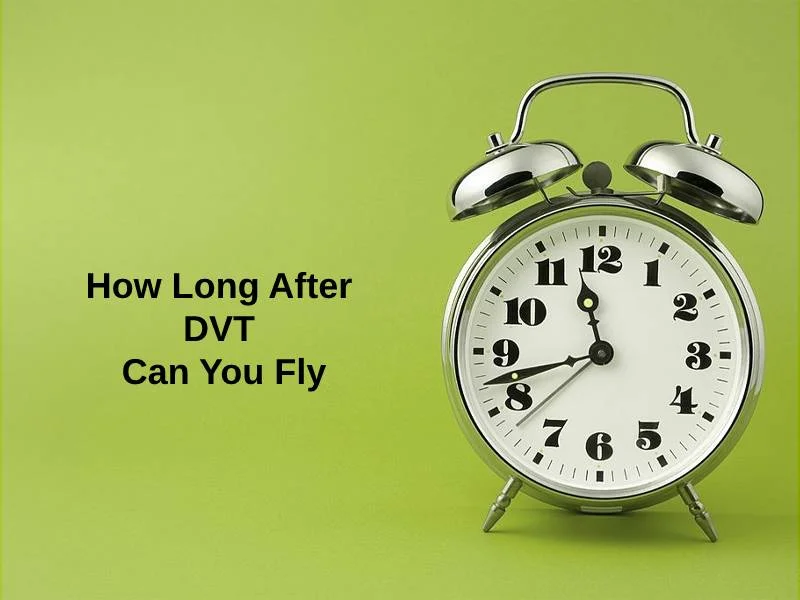Exact Answer: Minimum 4 weeks
DVT is known as Deep Vein Thrombosis. The people who suffer from DVT, their blood moves very slowly through the veins and causes the blood cells to clot. When the clot forms large and deep inside their veins and into their body, it is known as DVT in medical terms.
DVT is not diagnosed early and causes many complications. It is a serious problem and can cause serious illnesses including disability and death. The blood clots in DVT form in the lower legs, feet, toes, and also form on the thighs or the pelvis. But it is to be noted that it can occur in other body parts also. But the good thing is, it is treatable and can be prevented and almost cured if diagnosed early.
Now let us know why DVT occurs and the risk factors that increase the chances of DVT.
- DVT occurs sometimes because of the injury of the veins that are caused by fractures.
- There is a severe injury in the muscles.
- After major surgery in the abdomen area, pelvis area, hip area, or the legs
- The main cause of DVT is the slow flow of the blood which is due to limited muscle movement, confinement to the bed after surgery, sitting somewhere for a long time.
- It is also caused by paralysis.

How Long After DVT Can You Fly?
| Dos after DVT | Don’ts after DVT |
| Do wear compression stockings | Don’t stand or sit in a spot for a long period of time. |
| Do take small intervals for walking while sitting for long hours | Don’t wear clothes that obstruct blood flow in your legs. |
| It is safe to do exercise like walking and swimming | Don’t smoke |
| Do check your weight often | When taking blood thinners, don’t participate in any kind of contact sports because of the risk of bleeding from trauma. |
After Deep Vein Thrombosis is diagnosed and cured, one should wait for at least 4 weeks to fly again. One who has a history of clots should be very conscious about DVT. But one should also know that DVT always shows some symptoms before occurrence. The symptoms include–
- Your foot, toes, ankle, or leg will swell but on one of the sides only.
- You will experience cramps and pain. This pain will first begin in your calf area.
- Sudden severe pain in your ankle or foot.
- Some areas of the skin will feel warmer than the rest part of the skin.
- Some areas of the skin will turn reddish, bluish, or pale.

There are also serious complications from an already existing DVT. In some cases, the part of a clot in your vein will break down and will travel through your blood. It will reach your lungs and will block you there. This phenomenon is known as pulmonary embolism or simply PE. But it should be remembered that DVT is preventable and also curable if diagnosed early. You should take some safety measures to prevent DVT.
- Don’t sit for a long time without any motion
- Use elastic socks
- Stop smoking
- Lose weight as much as possible.
Why It Take That Long After DVT To Fly?
If you sit for a long amount of time in an airplane seat, it will slow down and increase the risk of having a DVT. The dry air of the cabin and long hours of sitting in the airplane without any activity will cause more risk of having DVT. It will be riskier for people who have a history of DVT.
There is some controversy as to the cause of developing DVT related to flying, but it is to be noted that most studies have shown evidence that within 48 hours of flying on an airplane the preponderance of DVT is 2-10%. It is noticeable that it is the same rate at which people in the hospitals catch DVT. This risk factor varies. The longer the duration of the flight is, the risk of having DVT will be greater. The journey by flight longer than the time limit of 8 hours will pose the maximum risk. Let us know some tips to fly even if you have DVT.

- You should wear all kinds of compression stockings and socks. Using compression stockings one will be able to increase their blood flow in the legs.
- You should buy an airplane seat which has more space for your legs to spread.
- You must wear clothes which are comfortable and loose.
- You should occasionally do some mild exercise to keep your blood flow normally.
Conclusion
Deep Vein Thrombosis is very common in adults aged 41 to 60 and seniors whose age is 60+. But it is rare among children, teenagers, and young adults. According to statistics, almost 1 million people are affected by DVT each year in India. The probability of developing a DVT is 1 in a thousand per year and for a person, the chances of catching up with DVT during the entire lifetime is 5 percent. In the United States, almost 300,000 cases of the first-time DVT occur every year.
It is important to mention that older people are always in the risk zone for developing DVT. So they should take precautions especially for it. DVT has wide treatment options available. So we should not be afraid if DVT occurs. Rather we must go to the doctor as early as possible and start taking treatments to come out of DVT quickly and lead a happy life worry-free.